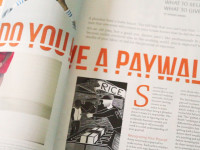The costs associated with the increased patent protections for pharmaceutical drugs in the trade agreement between Canada and the European Union has long been one of the most controversial elements of the deal. At least one study has pegged the cost to provincial health care at more than a billion dollars. In response to those concerns, the Conservative government promised to compensate the provinces for the increased costs. Earlier this year, when officials from Health Canada appeared before a House of Commons committee, they acknowledged that it is hard to estimate the actual cost but that they knew that the agreement would increase the costs of drugs in Canada.
Last week, Steve Verheul, the lead Canadian CETA negotiator, appeared before another House of Commons committee and was asked if the department has done any analysis on the financial impact of the extended patent protection. Remarkably, Verheul said that it has not, arguing that it is difficult to come up with a projection. In fact, when pressed on the issue, Verheul speculated that perhaps costs would not increase since Canadians already pays higher prices for pharmaceutical drugs than consumers in European countries such as the UK, France or Germany.
These comments from Canada’s lead CETA negotiations are simply bewildering.











